Conversion Optimization for Local Businesses: Get More Sales

Did you know that the average conversion rate for local businesses is under 3%? That means 97% of your website visitors are leaving without becoming customers. With the right conversion optimization strategies, you can double your revenue—without spending a dollar more on traffic. In this comprehensive guide, we reveal how local businesses can transform their websites into powerful tools for increasing conversion rates , maximizing profits, and building lasting customer relationships. Whether you run a neighborhood bakery, a boutique, or a professional service, these conversion optimization tips can transform the way you do business online.
Unlocking Success: Why Conversion Optimization for Local Businesses Matters
When it comes to conversion optimization for local businesses , even small tweaks can lead to massive gains. Local businesses often face intense competition, limited marketing budgets, and the unique task of attracting nearby customers instead of a global audience. By focusing on conversion rate optimization , you’re not just attracting more visitors but turning a larger percentage of these site visitors into loyal, paying customers. This means your marketing efforts become more efficient, and every click on your landing page has a greater chance of driving sales.
For example, imagine a local gym in a competitive area. By streamlining their sign-up landing page and adding social proof with member testimonials, the gym boosts its conversion rates from 1.8% to 5%. That’s a nearly three-fold increase in memberships with no change in traffic. From restaurants to retail shops and service providers, every small business stands to gain. When you optimize conversions, you’re focused on getting more value from the visitors who are already looking for businesses like yours—a subtle but powerful shift that fuels sustainable growth.

Did you know that the average conversion rate for local businesses is under 3%? Optimizing this can double your revenue without increasing traffic.
What You’ll Gain: Essential Insights into Conversion Optimization for Local Businesses
- Discover proven conversion rate optimization methods tailored for small businesses
- Understand how to craft high-converting landing pages for local audiences
- Learn the importance of social proof and trust signals for increasing conversions
- Identify key conversion goals and KPIs to measure growth effectively
- Explore the impact of user experience and user behavior on conversion rates
Understanding Conversion Rate and Conversion Rate Optimization for Local Businesses
Defining Conversion Rate and Its Importance for Small Businesses
Conversion rate measures the percentage of website visitors who complete a desired action —whether it’s filling out a form, calling your shop, or making a purchase on your web page . For small businesses , this metric is a key indicator of digital marketing health. A high conversion rate means your site is persuasive, user-friendly, and effective at addressing the pain points of your potential customers . On the other hand, a low conversion rate hints at friction in the customer journey , weak calls-to-action, or a poor fit between your audience and your offer.
Let’s say your landing page receives 500 visitors weekly. At a 2% conversion rate , only 10 visitors become customers. If you can boost that rate to 5%, you now have 25 sales per week—an immense difference driven by refining the user experience and aligning your page with customer feedback . Understanding this metric, tracking it, and striving for continuous improvement forms the foundation of effective conversion optimization for local businesses .

The Science of Conversion Rate Optimization for Local Businesses
Conversion rate optimization (CRO) is the art and science of increasing the percentage of site visitors who take a desired action . For local businesses , CRO goes beyond page tweaks—it’s about understanding what your target audience values most, identifying barriers on your web pages , and systematically testing ways to remove friction. Data-driven CRO involves regular use of tools like Google Analytics to analyze user behavior , bounce rate, path to purchase, and engagement on both landing pages and product pages .
The process doesn’t end with initial improvements. Continuous rate optimization means regularly updating your online presence to reflect seasonal offers, shifting customer needs, and changes in digital marketing best practices. Successful businesses treat CRO as a journey, not a destination—always seeking new ways to increase conversion and outperform competitors in their local market.
Landing Pages: The Cornerstone of Conversion Optimization for Local Businesses
Optimizing Your Landing Page for Maximum Conversion Rate
A well-crafted landing page is the heart of any effective conversion optimization for local businesses strategy. Unlike a generic web page , a landing page has a singular focus: guiding site visitors toward a conversion goal such as a phone call, booking, or purchase. Effective pages are laser-focused on benefits, have clear headlines, concise copy, and prominently feature calls-to-action (CTAs). Visual elements, like images showing happy local customers or recognizable storefronts, add authenticity and build trust quickly.
When optimizing your landing page , start by ensuring that the design is intuitive and the messaging addresses local pain points . Add social proof with customer testimonials, display badges for local awards, and highlight your unique selling propositions. Make all clickable elements stand out with contrasting colors, and ensure your CTAs clearly state the desired action . Remember, every second counts—a cluttered design, slow load times, or confusing layout can cause potential customers to abandon your page. Prioritizing clarity and ease of use will do wonders for your conversion rates .
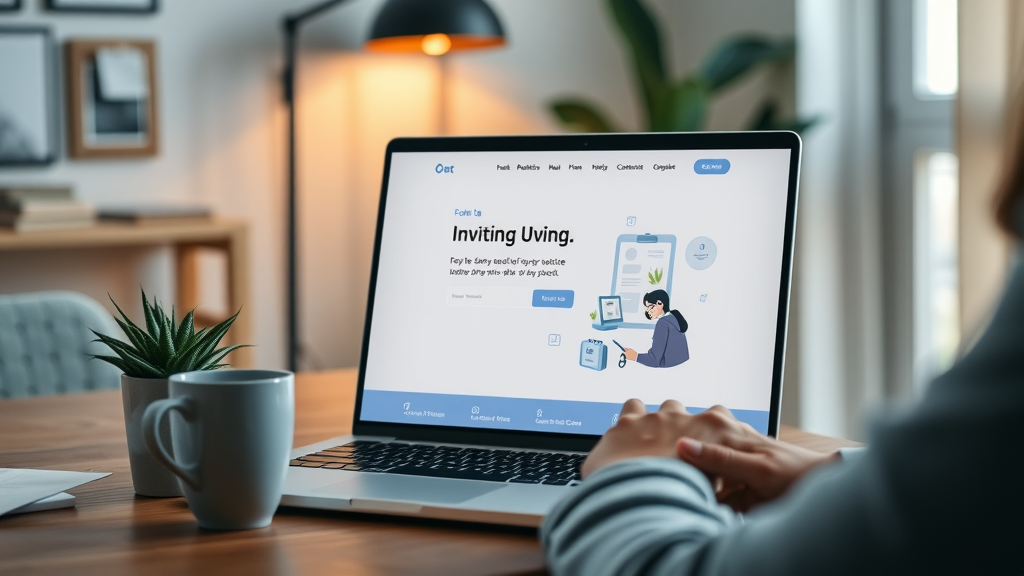
Landing Pages vs Product Pages: Which Drives More Conversions for Small Businesses?
Landing pages and product pages each serve a unique purpose in your digital sales funnel. While product pages are crucial for detailed product information and direct e-commerce, landing pages are often more effective for focused campaigns, promotions, or capturing leads for small businesses . The reason? Landing pages minimize distractions and eliminate navigation menus, allowing visitors to focus only on your offer and conversion goal .
By contrast, a typical product page may include multiple links, related products, and additional information, which can dilute attention and lead to higher bounce rates. For services like home repairs, salons, or health practitioners, a tailored landing page paired with a booking form or contact CTA is more likely to increase conversion than a generic product list. The lesson: align your page type with your campaign objectives and always use data to compare the performance of landing pages versus product pages .
Data-Driven Decisions: Using Google Analytics for Conversion Optimization for Local Businesses
Tracking User Behavior on Landing Pages and Product Pages
Understanding how potential customers interact with your landing page and product page is crucial for making smart conversion optimization decisions. Google Analytics is a powerful tool that helps you monitor important metrics like time on page, bounce rate, exit rate, and click paths. By analyzing user behavior data, you gain insight into what’s working and where people are dropping off. For example, a high bounce rate on a landing page could indicate that messaging is unclear or your offer isn’t compelling enough.
Set up event tracking in Google Analytics to monitor specific conversion goals (like form submissions, phone clicks, or purchases). Review heatmaps and user recordings to see exactly how site visitors navigate your pages. Armed with this data, you can make evidence-based changes—such as moving your CTA higher on the page or simplifying your booking form—to increase conversion and understand the impact of each tweak you make.
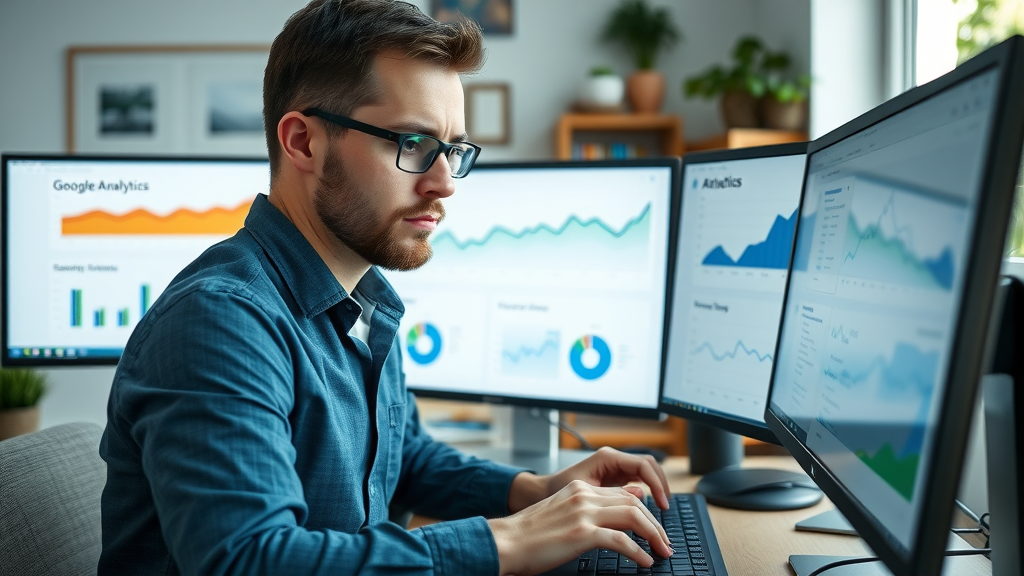
Setting and Measuring Conversion Goal Success
For conversion optimization for local businesses to be effective, you need clear, measurable conversion goals . These could include scheduling appointments, submitting contact forms, requesting quotes, or completing online purchases. KPIs (Key Performance Indicators) help you track progress and know what’s working. Examples include conversion rate, form completion rate, and average order value.
Regularly assess these KPIs through Google Analytics dashboards and monthly reports. Share insights with your team and use A/B testing to experiment with new approaches—like tweaking headlines, button text, or images. Tracking conversion goal success over time keeps you on the path to steady growth while justifying future investments into digital marketing and site improvements.
| Conversion Goal | Associated KPI | Measurement Tool |
|---|---|---|
| Form Submission | Form Completion Rate (%) | Google Analytics/Event Tracking |
| Phone Call | Call Button Clicks | Google Analytics/Call Tracking |
| Online Booking | Booking Conversion Rate (%) | Booking Software/Google Analytics |
| Product Purchase | Sales Conversion Rate (%) | Google Analytics/E-commerce Tracking |
| Email Signup | Signup Rate (%) | Google Analytics/Email Platform |
User Experience: How UX Impacts Conversion Rate Optimization for Local Businesses
Navigating User Experience Challenges on Landing Pages
The user experience (UX) on your landing page is one of the top factors influencing conversion optimization for local businesses . UX issues like slow loading times, complicated navigation, or lack of clarity in your messaging can drive potential customers away. Addressing these challenges means creating a site that’s visually appealing, intuitive to use, and laser-focused on your conversion goal .
Pay special attention to first impressions. Your headlines must be clear and concise, instantly communicating the value of your offer. Visual hierarchy guides visitors toward the most critical CTAs. Remove unnecessary distractions—popups, auto-play videos, and excess navigation can muddle the path to conversion. An accessible, streamlined path increases trust and makes visitors more likely to follow through with the desired action .

Improving Mobile Responsiveness for Increased Conversion Rates
Today, a large percentage of site visitors arrive via mobile devices. A mobile-responsive landing page is essential for both search visibility and conversion rate optimization . Responsive design ensures your web pages look and work perfectly on any device—making forms, CTAs, and navigation easy to use with just a swipe or a tap.
If your site isn’t optimized for mobile, potential customers will abandon ship fast—costing you sales and hurting your conversion rates . Regularly test your site on various devices, address slow-loading images, and ensure CTA buttons are large enough for easy tapping. Keep content concise and prioritize critical information near the top of the page so mobile users instantly see your offer and next steps.
User Behavior: Understanding Visitor Paths to Increase Conversion
Deeply understanding user behavior —from first click to final purchase—helps you pinpoint areas to optimize. Investigate common visitor paths: do users jump from your landing page to a contact form, or do they drop off before reaching your product page ? Tools like click maps and site analytics identify which elements attract the most attention or cause friction.
Mapping the customer journey , addressing pain points, and adjusting content or design based on these insights can make a significant difference. Small businesses that consistently tweak their approach based on user behavior data ultimately see higher engagement, more conversions, and increased customer loyalty.
Leveraging Social Proof and Trust to Build Loyalty and Improve Conversion Rates for Local Businesses
Effective Ways to Build Trust on Landing Pages
For local businesses , building trust is everything. People want to know you’re reliable, reputable, and part of the community. This is why trust signals —like customer reviews, business accreditation badges, and recognizable local awards—should be front and center on your landing page . These elements build trust swiftly and lower the psychological barriers that might stop a potential customer from acting.
Displaying contact information, offering clear guarantees, and using real photos of your team or happy customers ensure your business feels genuine. Don’t forget to showcase years in business, community involvement, and any media mentions. The more trustworthy your landing page appears, the higher your conversion rates will climb.
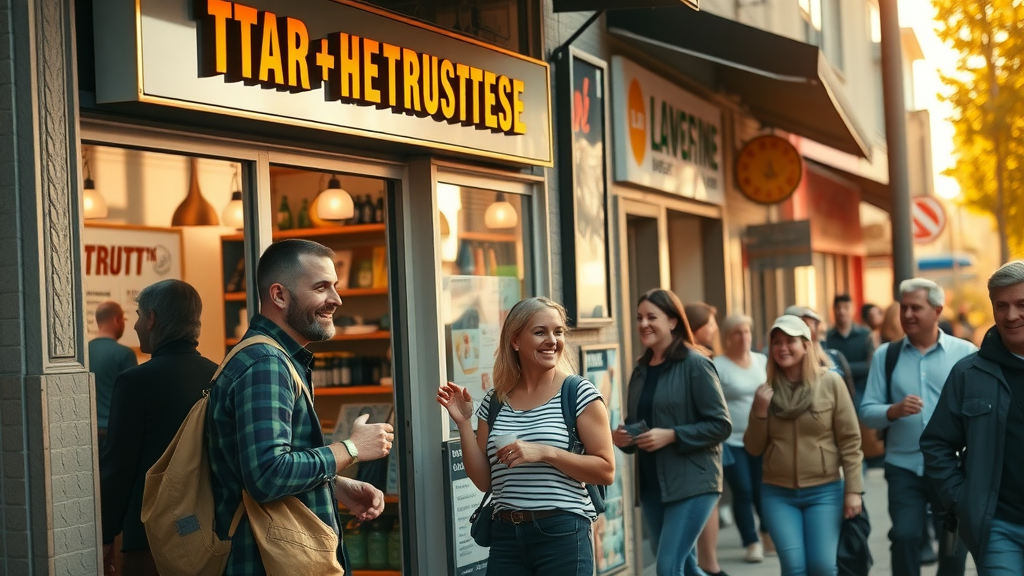
Customer Reviews and Testimonials: The Social Proof Boost
Social proof is a heavyweight factor in conversion optimization for local businesses . Featuring customer reviews and testimonials on landing pages turns happy clients into persuasive salespeople. Real, recent feedback—especially with names, photos, or video snippets—demonstrates authenticity and shows that potential customers just like them have succeeded with your service.
According to studies, over 90% of consumers trust online reviews as much as personal recommendations. By highlighting positive experiences, you reinforce confidence in your offerings and make it far easier for visitors to complete a desired action . Don’t be shy about prompting happy clients for testimonials, Google reviews, or feedback surveys that you can then feature on your site.
“Trust is the currency of conversion. Without it, even the best landing page can’t save your bottom line.”
Actionable Rate Optimization Tactics for Small Businesses
CRO Techniques for Small Businesses: Quick Wins and Long-Term Strategies
Not all conversion rate optimization requires a total website overhaul. Some of the fastest gains come from small adjustments—like simplifying your CTAs, adding a new testimonial to your landing page , or improving form design. These “quick wins” can positively impact your conversion rates with little effort. On the other hand, building a system for ongoing CRO—regular A/B testing, in-depth analytics reviews, and continual updates—brings steady, compounding growth.
For small businesses , start with the basics: ensure your site loads fast, address common questions up front, and highlight your top value propositions. As you gain more data, you can layer in advanced tactics—personalized offers, retargeting ads, and heatmap analysis—to drive even higher ROI from your digital marketing efforts.
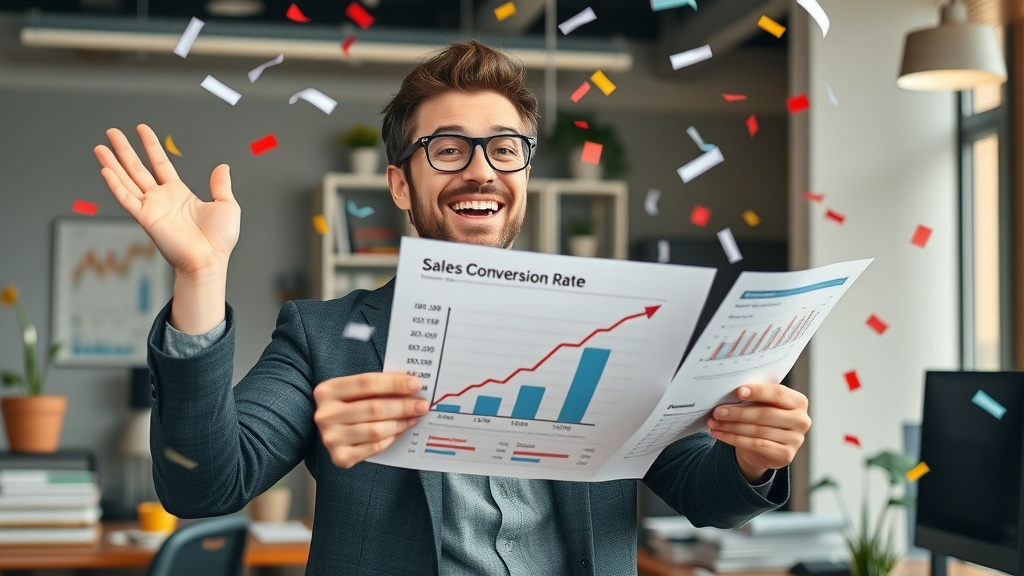
A/B Testing: Fine-Tune Your Conversion Optimization
A/B testing is a staple of advanced rate optimization . By showing two different versions of your landing page (or web element) to random segments of visitors, you learn which version performs better at achieving your conversion goal . This data-driven approach takes the guesswork out of conversion optimization and ensures you’re always getting closer to what your audience wants.
Test variations in headlines, images, color schemes, button text, and form layouts. Don’t forget to track user behavior —sometimes even small changes can lead to big jumps in conversion rates . The goal: let real visitor data direct your next round of improvements. Regular A/B testing empowers small businesses to outcompete larger companies whose sites remain static or unoptimized.
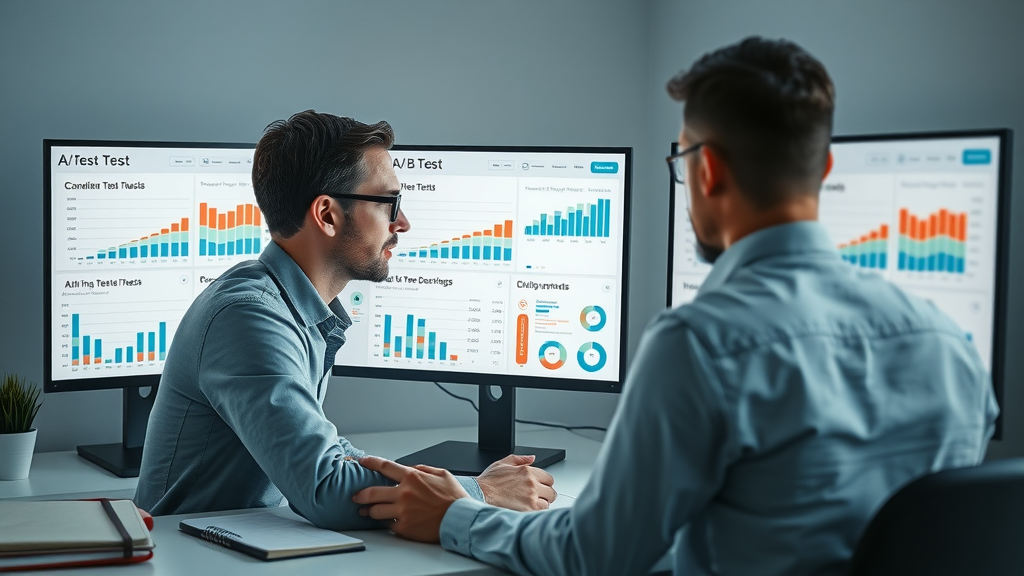
Optimizing Calls-to-Action for Increase in Conversion Rates
A compelling call-to-action (CTA) can be the single factor that nudges a potential customer to convert. Effective CTAs are clear, action-oriented, and speak directly to the benefit your visitor will receive (“Book Your Free Consultation,” “Get Started Today,” or “Reserve Your Spot”). Placement is equally important; CTAs should be visible without scrolling and repeated at key points throughout your landing page .
Experiment with different CTA styles using A/B testing—change button colors, text, or position to see which version resonates best. Pay attention to user behavior : are people hovering but not clicking, or is there a drop-off just before the CTA? Understanding these patterns can lead to specific, conversion-boosting tweaks to your site that drive measurable business growth.
| Test Element | Variation A | Variation B | Winning Variation | Increase in Conversion Rate |
|---|---|---|---|---|
| CTA Button Color | Blue | Green | Green | +12% |
| Headline Text | “Contact Us Today” | “Book Your Free Consultation” | B | +18% |
| Form Length | 5 Fields | 3 Fields | B | +24% |
| Customer Testimonial Placement | Bottom of Page | Above CTA | B | +10% |
Personalization and Local Relevance: Tailoring Your Conversion Optimization for Local Businesses
Localized Offers: Connecting Directly with Local Audiences
Nothing resonates more with your audience than offers that speak directly to their community or location. Create targeted promotions (such as “20% off for Downtown Residents!”) to attract potential customers in your area. Use local events, neighborhood news, or regional holidays to add timely touches that boost engagement and relevance on your landing page .
Personalization transforms passive website visitors into active participants, making your business feel neighborly and approachable. This level of customization not only increases conversion but also fosters brand loyalty and recurring sales from your local customer base.
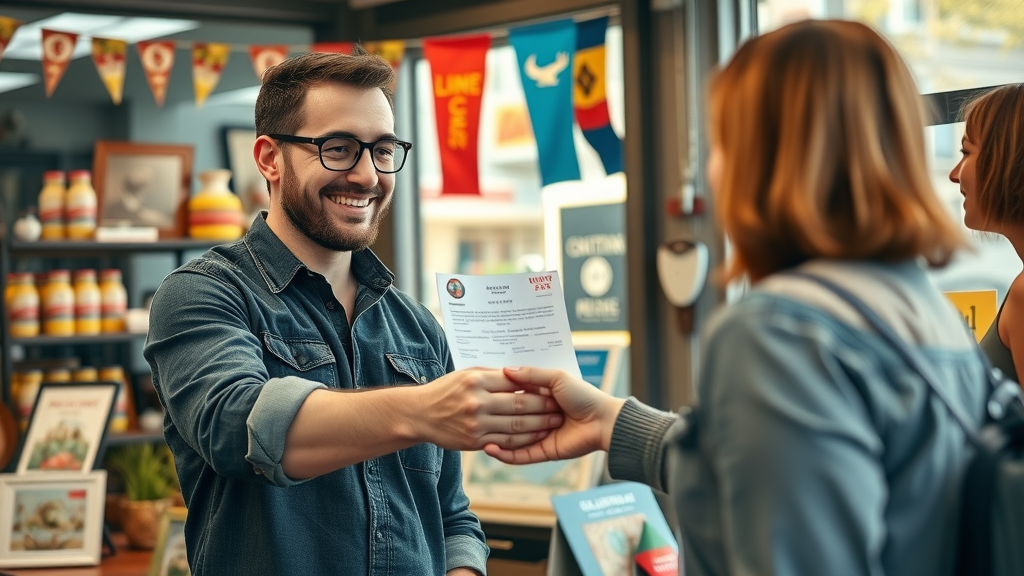
Hyperlocal Messaging: Increasing Relevance to Drive Higher Conversion Rates
Hyperlocal messaging goes beyond just including a city name; it shows that you understand the unique needs and culture of your neighborhood. Replace generic language (“We’re here for you!”) with specifics that only locals would recognize (“We’re five minutes from Maple Park—stop by before your afternoon walk!”). This creates an instant sense of familiarity that puts potential customers at ease.
Update your site content regularly to address new neighborhood developments or highlight participation in local festivals and markets. The closer your business messaging matches the daily experiences and interests of your target audience, the more likely visitors will convert.
SEO for Local Businesses: Foundation of Online Conversion Optimization
Implementing Local SEO Strategies to Increase Traffic and Conversion Rates
No conversion optimization for local businesses effort is complete without strong local SEO . When potential customers search for services in their area, you want your landing page to show up first. Optimize title tags, descriptions, and content with location-based keywords. Make sure your business is listed (and verified) on Google Business Profile , Bing, and relevant local directories.
Local SEO also means managing online reviews, acquiring backlinks from community websites, and keeping your business information (NAP: Name, Address, Phone) consistent across the web. The impact is twofold: you attract more targeted traffic and build trust before visitors even reach your site—laying the groundwork for higher conversion rates .

Optimizing Business Listings to Drive More Landing Page Visits
- Claiming and verifying your Google Business Profile
- Managing citations and local directory listings
- Generating location-based keywords for landing pages
Measuring Success: Conversion Goal Setting and KPI Tracking for Local Businesses
Essential KPIs in Conversion Optimization for Local Businesses
Measuring your efforts is key to sustained success. Track essential KPIs such as unique visitors, click-through rates, conversion goal completion, bounce rate, and customer lifetime value. Assessing these regularly allows you to spot opportunities, test new strategies, and refine what’s working—even as local trends shift.
Small businesses thrive when their goals are tightly defined and progress is measured. Use dashboards and monthly reports to communicate results and align your team’s efforts around the most impactful goals.
Analyzing Conversion Rates Across Landing Pages and Product Pages
To maximize conversion rates , systematically compare the performance of your landing pages versus product pages . Identify which types of offers or presentation styles prompt more potential customers to complete a desired action . Seek out patterns—does a particular page always outperform others? What makes it unique in terms of structure, messaging, or visuals?
Use these insights to standardize what works across all your web pages . Replicate successful headlines, testimonial placement, or CTA phrasing, then continue testing for further improvements. The result: a self-renewing cycle of optimization that keeps your business ahead of shifting digital trends.
People Also Ask: What is conversion rate optimization for small businesses?
Conversion rate optimization for small businesses is the methodical process of increasing the percentage of website visitors who take a desired action—such as making a purchase, booking an appointment, or filling out a contact form. Through data analysis and continual improvement of landing pages, calls to action, and user experience, small businesses can dramatically improve their sales and revenue without necessarily increasing website traffic.
People Also Ask: How to do SEO for local businesses?
SEO for local businesses involves optimizing business listings (such as Google Business Profile), building local citations, using localized keywords, acquiring relevant links, and ensuring consistent NAP (name, address, phone) information across platforms. These steps help drive organic traffic to landing pages, supporting increased conversions and sales.
People Also Ask: How much does conversion rate optimization cost?
Conversion rate optimization can range from DIY tools costing $0-100/month to hiring specialized CRO agencies, which may charge anywhere from $500 to several thousand dollars monthly, depending on the complexity and goals for your small business.
People Also Ask: What is a KPI for conversion rate?
A KPI for conversion rate is a measurable metric that tracks the effectiveness of your conversion optimization efforts—for example, form fill rate, product purchases, booking completions, or call requests from your landing page.
Common Questions on Conversion Optimization for Local Businesses
- What are the first steps in conversion optimization for a local business?
- How do you measure the impact of a conversion optimization strategy?
- Is conversion rate optimization worth the investment for small businesses?
- How often should landing pages be tested or updated?
Top Takeaways to Drive Conversion Optimization for Local Businesses
- Focus on user experience, especially on landing pages and product pages
- Track conversion goals using Google Analytics
- Build trust with customers via social proof and testimonials
- Optimize for local search and personalize offers for your community
- Test and iterate—never stop improving your conversion rates
“Good CRO means getting more from what you already have. It’s often the highest ROI activity for any local business online.”
Accelerate Your Sales Growth With Next-Level Conversion Optimization for Local Businesses
Ready to boost your bottom line? Take the next step with proven strategies for conversion optimization tailored to local businesses and see measurable improvement in your sales today.
Take action now—review your landing pages, experiment with CTAs, and leverage customer reviews. Every small change today can fuel significant growth tomorrow!
To further enhance your understanding of conversion optimization for local businesses, consider exploring the following resources:
- “How Local SEO can Increase your Business’ Conversion Rate” ( veewz.com )
This article delves into the significance of local SEO strategies, such as optimizing for mobile users and focusing on local keywords, to boost your business’s conversion rates.
- “Optimizing Your Website for Local Conversions” ( ikonik.digital )
This piece offers practical advice on ensuring your website is mobile-friendly and leveraging localized calls to action to effectively engage your local audience.
By integrating the insights from these resources, you can implement targeted strategies to enhance your local business’s online presence and drive higher conversion rates.





